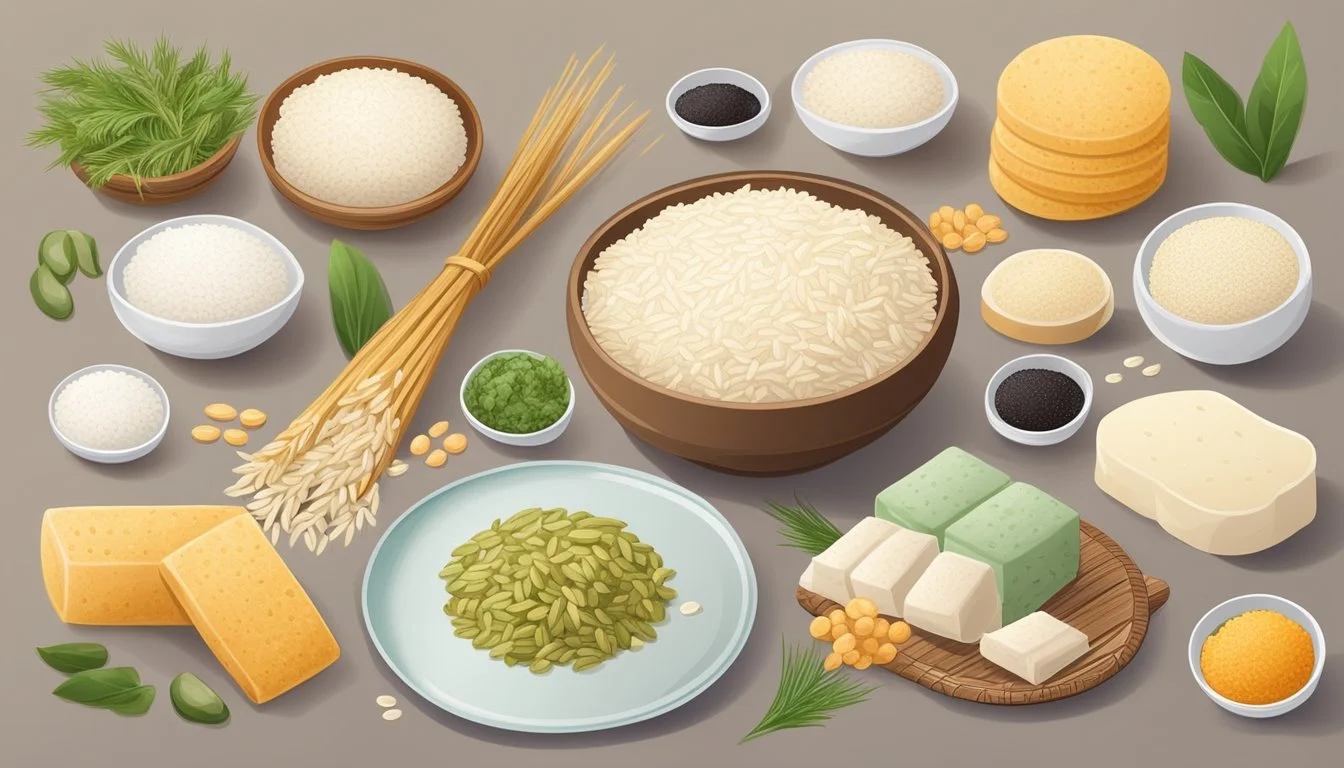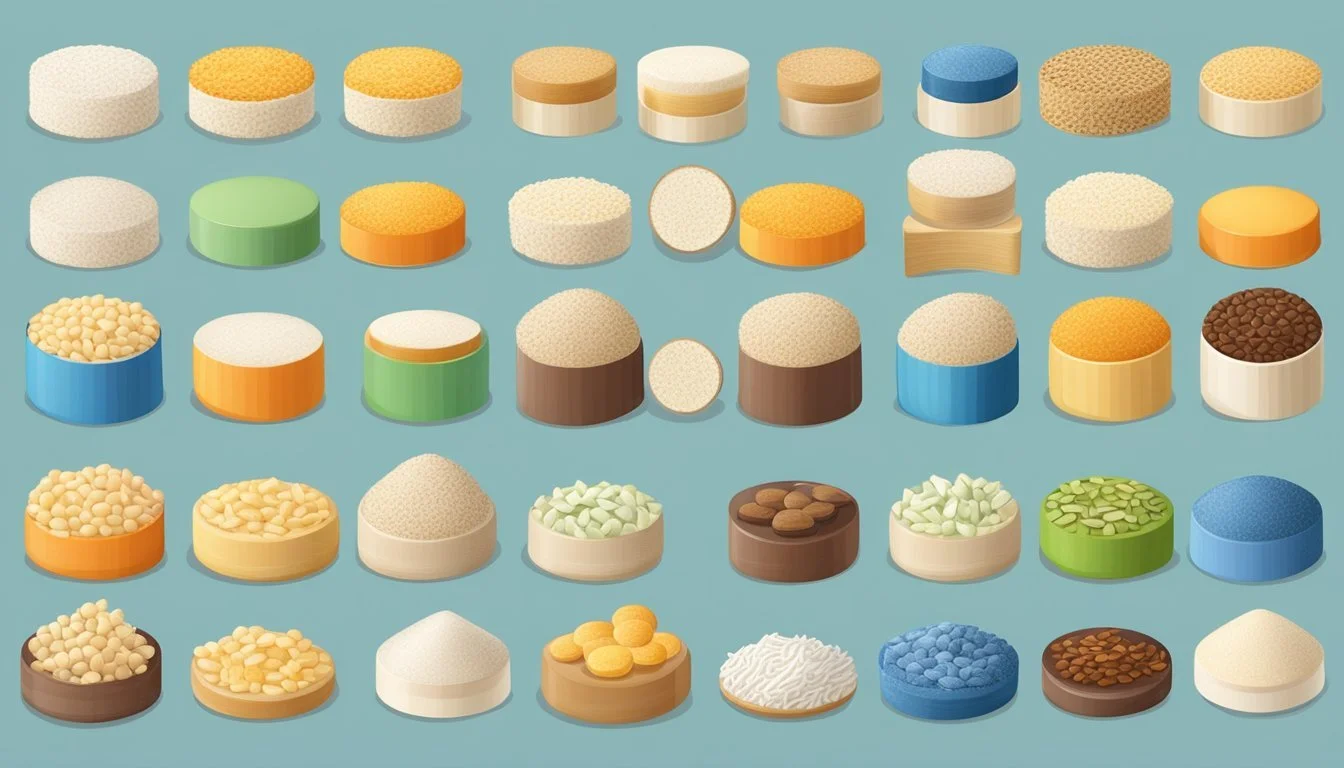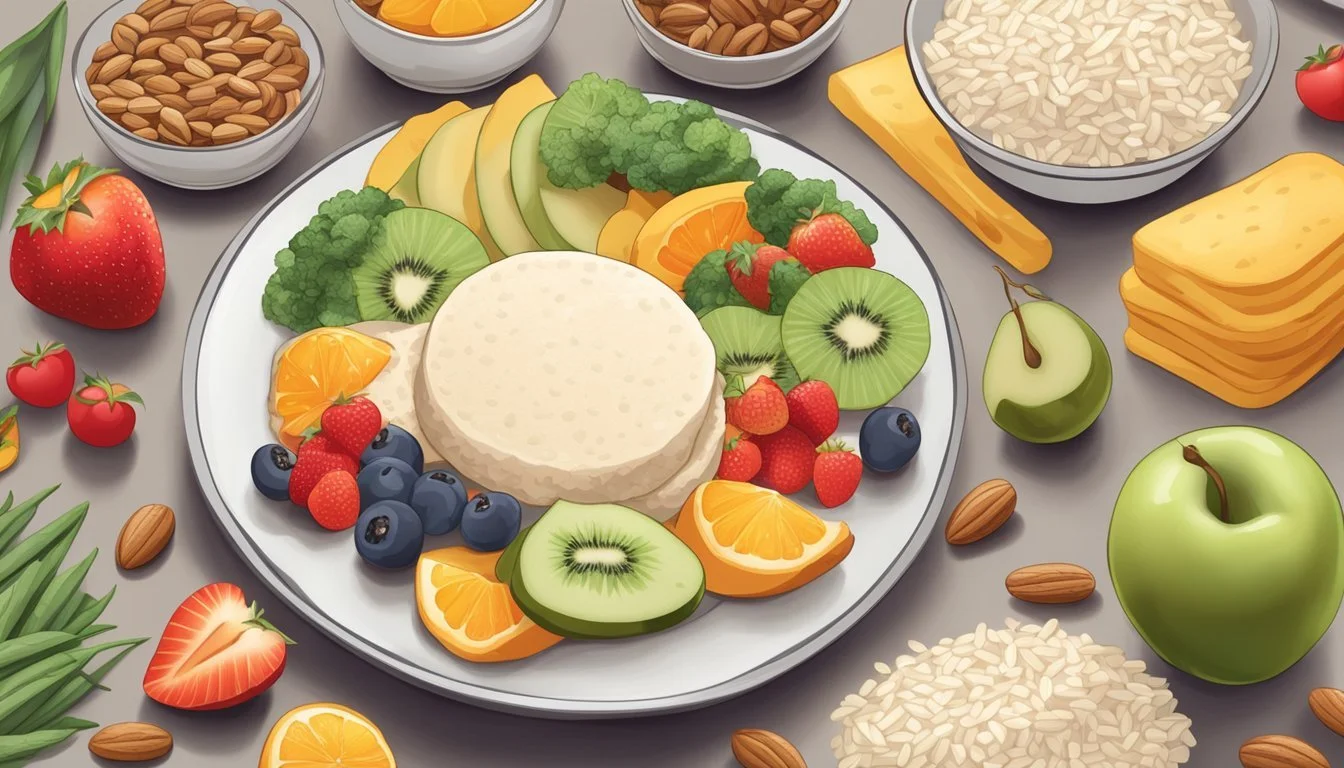Are Rice Cakes Gluten-Free?
Decoding the Snack's Ingredients for Celiac Concerns
Rice cakes have long been a popular snack choice for those looking for a light and airy alternative to bread or crackers. They are known for their low calorie count and ease of customization with various toppings. Given the increasing dietary preferences and needs, many consumers now seek out gluten-free options to align with health considerations such as celiac disease and gluten sensitivity.
In terms of their gluten content, rice cakes are predominantly gluten-free because they are made from rice—a grain that does not contain gluten. This positions rice cakes as a suitable snack for individuals who must avoid gluten. However, it is crucial for consumers to be vigilant, especially when selecting flavored rice cakes, as they may include additives or seasonings containing gluten.
Consumers should examine packaging labels carefully to ensure their rice cake selection complies with a gluten-free diet. The risk of cross-contamination in facilities that process products containing wheat, barley, or rye is also a consideration to be mindful of. Labels certifying the product as gluten-free can provide additional assurance for those seeking to maintain a diet free of gluten.
Overview of Rice Cakes
Rice cakes serve as a versatile snack option that accommodates various dietary needs. This section provides an understanding of what rice cakes are and their significance in different cultures.
What Are Rice Cakes?
Rice cakes are a type of food made predominantly from puffed rice or brown rice and are known for their crisp texture. Typically, these snacks (What wine goes well with snacks?) are made by applying heat and pressure to whole grains, turning them into light and airy discs. They can be found in both plain and flavored varieties, with the plain versions serving as a gluten-free option suitable for people with dietary restrictions such as celiac disease or gluten sensitivity.
Popularity and Cultural Significance
In many cultures, especially in China, rice cakes have been a staple food for centuries. They are enjoyed in various forms, from sweet to savory, and are integrated into different cultural dishes. The snack's popularity extends beyond its origins, as rice cakes are embraced globally for their low-calorie count and potential health benefits. They can be eaten alone or topped with a range of ingredients to enhance flavor and nutritional value.
Gluten Free Essentials
When considering gluten-free foods like rice cakes, it's crucial to first understand what gluten is and why gluten-free diets are essential for certain individuals.
Understanding Gluten
Gluten is a protein found in various grains, notably wheat, barley, and rye. It gives baked goods their elasticity and chewiness. However, for those with gluten intolerance or celiac disease, even a tiny amount of gluten can trigger an immune response that damages the small intestine.
Grains containing gluten:
Wheat
Barley
Rye
Gluten functions:
Provides elasticity to dough
Adds texture to baked goods
The Importance of Gluten-Free Diets for Celiac Disease
Individuals with celiac disease must adhere to a strictly gluten-free diet to prevent an autoimmune reaction that can cause serious harm to the small intestine's lining. This diet is the only current management method for celiac disease. Avoidance of gluten is also necessary for those with non-celiac gluten sensitivity.
Celiac disease effects:
Damage to small intestine's lining
Impaired nutrient absorption
Gluten-free diet benefits:
Prevents autoimmune reactions in celiac disease
Reduces symptoms like discomfort and inflammation in gluten sensitivity
Health and Nutrition
Rice cakes offer a gluten-free snack option, low in calories and fat, which can be healthful when eaten in moderation and as part of a balanced diet. They serve as a versatile base for a variety of toppings.
Nutritional Composition of Rice Cakes
Rice cakes are a simple product made primarily from puffed rice. The nutritional value can vary slightly based on the type of rice and additional ingredients used. Typically, a plain brown rice cake will contain:
Calories: About 35
Carbohydrates: 7 grams
Protein: Up to 1 gram
Fat: Negligible amounts; generally low in fat
Fiber: Approximately 0.4 grams
Sodium: Varies depending on whether the rice cakes are salted or not
They are not a significant source of essential nutrients like iron, B vitamins, niacin, manganese, selenium, or phosphorus.
Health Benefits and Considerations
Rice cakes are considered a healthful choice, particularly for individuals looking for a low-calorie and gluten-free snack. They are often eaten by those aiming to manage their blood sugar levels due to their minimal effect on blood sugar when eaten in moderation.
The benefits of rice cakes can be amplified if topped with nutritious spreads or other foods. A spread of nut butter or hummus can add healthy fats, fiber, and protein, enhancing the nutritional profile of the snack.
However, consumers should be mindful of sodium content particularly in salted varieties. It's also recommended to check for added sugars in flavored rice cakes. Despite being low in calories, rice cakes should not be relied upon as a sole source of nutrition, as their nutritional value is not comprehensive.
Rice Cakes in a Gluten-Free Diet
For individuals following a gluten-free diet, rice cakes offer a convenient snack option due to their natural composition. It’s important to examine their gluten content and manufacturing processes to ensure they fit safely into such dietary restrictions.
Are Rice Cakes Naturally Gluten-Free?
Rice cakes are made from whole grain rice, which is naturally gluten-free. This characteristic makes them a safe substitute for individuals with gluten sensitivities or celiac disease. The basic ingredient list for a traditional rice cake typically includes rice and perhaps salt, both of which do not contain gluten. When purchasing rice cakes at grocery stores, consumers looking for gluten-free options should nonetheless be vigilant, as certain flavored variants might include additives that contain gluten.
Certification and Safety
To ensure the absence of gluten, one should look for rice cakes that are certified gluten-free. This certification indicates that the product has undergone testing and meets strict standards for gluten content. It is also a safeguard against cross-contamination, a common occurrence in facilities that process both gluten-free and gluten-containing products. Reading food labels carefully is essential; they provide information on ingredients and potential allergens. When the ingredient list or manufacturing details are unclear, purchasing products with a gluten-free certification offers an additional layer of security.
Varieties and Flavors
When considering rice cakes, the distinction between plain and flavored varieties is crucial as each offers a different set of characteristics, especially in terms of gluten content and nutritional value.
Plain vs Flavored Rice Cakes
Plain rice cakes are inherently gluten-free since they are made from whole grain brown rice. They provide an easily customizable base for a variety of toppings. Being naturally gluten-free, they can be a suitable alternative for people with celiac disease or a preference for gluten-free foods. Common toppings can include salt, cheese, or even almond butter for added taste and nutritional benefit, like magnesium.
However, when it comes to flavored rice cakes, one must exercise caution. Flavored varieties often incorporate additional ingredients that might contain gluten, such as preservatives, rye, or barley malt flavoring. Popular flavors like cheese, chocolate, and even savory options like barbecue can be appealing but may pose a risk for those sensitive to gluten. It is essential to check for a gluten-free label when purchasing flavored rice cakes, and consider the potential for added sugars and flavor enhancers.
Common Brands and Label Reading
When purchasing rice cakes, identifying brands that cater to gluten-free diets is vital. Brands like Quaker, Lundberg, and Elemental offer varieties that are labeled gluten-free.
Label reading is a skill that helps consumers discern gluten-free options from those that may contain hidden gluten sources. One should look for phrases like "certified gluten-free" or check for any mention of gluten-containing grains. Furthermore, watch out for alerts to potential cross-contamination in facilities processing products with gluten. For a gluten-free diet, steer clear of flavorings derived from gluten-containing grains, and verify that potential toppings, such as salmon or chocolate, are also gluten-free and free from cross-contamination risks.
Manufacturers often use a variety of flavors to enhance the taste profiles of rice cakes. Beyond plain rice cakes, one might find salted, caramel, or cinnamon options. It's crucial to check the ingredients list for each flavor to ensure they do not include gluten-containing additives.
By attentively reading labels and ingredient lists, consumers can enjoy the wide range of rice cake variations without compromising their gluten-free requirements.
Creative Usage
Rice cakes serve as a simple yet innovative canvas for a variety of toppings, offering a gluten-free alternative to traditional snacks. Through creative pairing of ingredients, they cater to both savory and sweet preferences, enhancing their appeal as a versatile snack option.
Healthy Topping Ideas
Individuals can transform rice cakes into nutrient-rich snacks by carefully selecting wholesome toppings. For a heart-healthy choice, avocado or guacamole can be spread atop rice cakes, providing a creamy texture and beneficial monounsaturated fats. Nut butters, like almond or peanut butter, add a satisfying dose of protein and can be sprinkled with cinnamon for extra flavor without the need for added salt or sugar.
Avocado/Guacamole – Monounsaturated fats
Nut Butters (almond, peanut) + Cinnamon – Protein and flavor
Adding hummus introduces both protein and fiber, making it a nutritious layer that pairs well with sliced vegetables. For those who enjoy cheese, a slice of low-fat cheese can deliver calcium and protein without unnecessary calories.
Hummus + Sliced Vegetables – Protein and fiber
Low-fat Cheese – Calcium and protein
Rice Cakes as Meal Replacements
While rice cakes are commonly seen as snacks, they can also act as light meal replacements when topped appropriately. Coupling rice cakes with smoked salmon and a touch of cream cheese creates a balanced offering of protein and omega-3 fatty acids, suitable for a quick lunch or a satisfying breakfast.
Smoked Salmon + Cream Cheese – Protein and omega-3 fatty acids
For a more substantial meal, one can assemble a mini open-faced sandwich using rice cakes as a base, layered with lean turkey, cucumber, and a smear of mustard. Those preferring a sweeter taste might opt for ricotta cheese topped with fresh berries and a drizzle of honey. This combination not only satisfies sugar cravings but also supplies essential nutrients.
Lean Turkey + Cucumber + Mustard – Savory mini sandwich
Ricotta Cheese + Fresh Berries + Honey – Sweet and nutritious
In summary, rice cakes are a remarkably adaptable food item that can be enjoyed in countless ways. By experimenting with different topping combinations, individuals can enjoy a range of flavors while sticking to a gluten-free diet.
Practical Tips
When choosing and incorporating rice cakes into a gluten-free diet, it is important to focus on the product's labeling and the role rice cakes can play as a dietary component. Specifics about label reading and suggestions for including rice cakes in meals can optimize both safety and nutritional value.
How to Choose Rice Cakes
To select gluten-free rice cakes, individuals should carefully examine the packaging. Certified gluten-free labels indicate a product meets stringent standards for gluten content, typically below 20 parts per million. Brands like Kallo rice cakes often offer such certifications. Additionally, checking whether the manufacturing facility also processes gluten-containing products is wise to avoid potential cross-contamination.
Here is a checklist for selecting rice cakes:
Look for certified gluten-free labels.
Check the ingredient list for any potential gluten-containing additives, especially in flavored rice cakes.
Confirm the brand's reputation for gluten-free products.
Verify if the product is made in a dedicated gluten-free facility.
Incorporating Rice Cakes into Your Diet
Rice cakes serve as a versatile food item perfect for those seeking a low calorie and convenient snack option. They can easily substitute bread, appealing to individuals with diabetes due to their portion-controlled size and lower influence on blood sugar levels. Whole grain brown rice, which is commonly used in rice cakes, offers additional health benefits such as fiber.
For a gluten-free diet, rice cakes can be paired with a variety of toppings. Here are some creative uses:
Bread substitute: Use rice cakes as a base for avocado toast or sandwich fillings.
Texture addition: Crumble puffed rice grains over salads or soups for a crunchy element.
Snack option: Top rice cakes with hummus, cheese, or fruit for a quick and nutritious snack.
Remember, when flavored, rice cakes can contain gluten, so it's essential to read labels carefully even when the rice cake itself is inherently gluten-free.
Conclusion
Rice cakes are a versatile treat that can suit various dietary restrictions, especially for those requiring gluten-free options. Made primarily from puffed rice, they often serve as a staple food for individuals with celiac disease or gluten intolerance. When selecting rice cakes, one should look for gluten-free certifications to ensure safety from cross-contamination.
Versatility: Rice cakes can be enjoyed in numerous shapes and forms, serving as a base for a wide range of toppings. Their taste and texture provide elasticity in meal planning, from a quick snack to a part of a meal.
Treats: They are frequently low in calories, offering a satisfying crunch without heavy ingredients. Rice cakes are adaptable, allowing for various flavor pairings from sweet to savory.
Staple Food: For many on a gluten-free diet, rice cakes are a staple due to their simplicity and availability. They support food variety without compromising dietary needs.
Elasticity: As a food product, rice cakes exhibit flexibility. Companies produce them in various shapes, catering to consumer preferences and uses.
Shapes: The typical round, flat shape is most common; however, mini rice cakes and other innovative forms are also available to enhance user experience.
In choosing rice cakes, one must pay attention to the label details, as flavored or seasoned options might contain gluten-containing ingredients. They are a recommended option for individuals seeking to maintain a gluten-free diet, provided the necessary precautions are taken.






